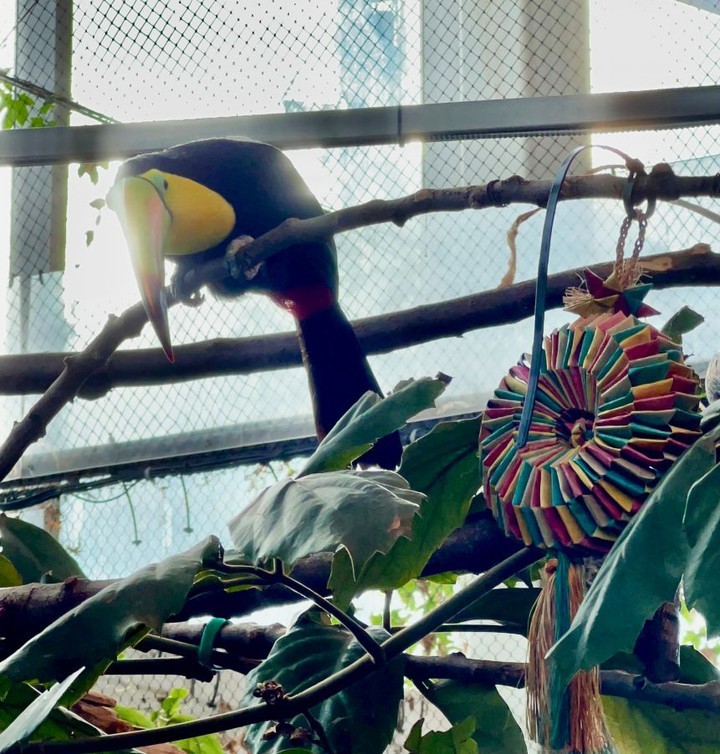- The significance of enrichment in maintaining animal welfare and health in aquariums.
- How donor contributions facilitate the provision of enhanced environments for aquatic animals.
- Various types and examples of enrichment activities introduced to the aquarium animals.
- The impact of enrichment on animal behavior and conservation efforts.
- Ways in which the public can support animal enrichment through donations and volunteerism.
Aquariums play a crucial role in wildlife conservation and education, hosting thousands of visitors keen to learn about aquatic life. An important facet of animal care in such environments is enrichment, a concept that ensures animals lead stimulating lives within their enclosures. Enrichment involves creating opportunities for physical and mental challenges, similar to those animals might encounter in their natural habitat. This practice addresses various behavioral needs, promoting natural behaviors and improving overall animal welfare.
Donations are a driving force behind enabling aquariums to provide these rich experiences. The generosity of donors allows the incorporation of innovative and exciting activities, enhancing both the physical and psychological wellbeing of the aquarium’s residents. Supporters of wildlife have contributed through wishlists and giving trees, extending the resources for creating enriched environments. Through these thought-out contributions, the aquarium can introduce new elements that stimulate animal curiosity, encouraging natural behaviors like foraging, exploration, and play.
Animal enrichment comes in many forms, from environmental modifications to behavioral challenges. For instance, puzzle feeders encourage problem-solving and simulate natural foraging behaviors. Interactive devices, such as floating toys or textured objects, foster exploration and spontaneous activities. In environments like aquariums, where the primary goal is the duplication of natural habitats, simulated environmental changes—like adjusting water currents or introducing new plants—create a dynamic setting. These adjustments offer animals a chance to exhibit their natural behaviors while ensuring they remain adaptable and healthy.
The introduction of diversified enrichment strategies can drastically influence animal behavior. Enrichment activities can reduce stereotypic behaviors, which are repetitive actions indicating stress or boredom, by catering to the animals’ instincts and mental needs. For instance, otters engaging with novel objects or toys often exhibit increased playfulness and social interaction, which are positive indicators of psychological health. Long-term engagement with such activities can lead to improved fitness and mental acuity, essential for the overall health of captive animals.
Moreover, enrichment contributes to conservation goals by enhancing reproductive success in captive breeding programs. Providing animals with a stimulating environment can increase their readiness to breed by enhancing their physical condition and reducing stress levels. Thus, enrichment directly impacts the conservation of species, many of which are under threat in the wild. Furthermore, by observing animals in enriched environments, researchers gain deeper insights into animal behavior, aiding efforts in habitat restoration and species reintroduction.
Public involvement is vital in sustaining enrichment initiatives. The community can participate through donations or volunteering, directly impacting the animals’ living conditions. By aligning personal passions with philanthropic efforts, individuals support the continuous development of these programs. Aquariums often host donation drives or volunteer programs that aim to boost engagement and create awareness of the importance of enrichment. Interested parties can consult aquarium websites or contact education departments for information on contributing to animal welfare.
In summary, thanks to remarkable donor efforts, aquariums are able to implement diverse and effective enrichment programs, ensuring their animals receive engaging and health-promoting experiences. Enrichment stands as a pillar of animal welfare, highlighting the bond between community support and the wellbeing of captive animals. Such activities not only benefit the animals but also enhance the educational and emotional experiences of visitors, fostering a greater appreciation for wildlife conservation. Donors play an irreplaceable role in this process, empowering aquariums to innovate and enrich the lives of the animals in their care.
*****
Source Description
Thanks to our amazing donors, our animals are now enjoying new and exciting enrichment! 🦦💖
We can’t thank you enough for your continued support and for helping to provide all our animals with fresh, fun, and enriching experiences. Here’s a peek at some of our favorite photos of our animals diving into the awesome gifts YOU made possible!🧇
Enrichment for these animals was gifted to the Aquarium from our wishlist, and generous donations were made from our giving tree. If you want to donate to the Aquarium, click the link in our bio!


